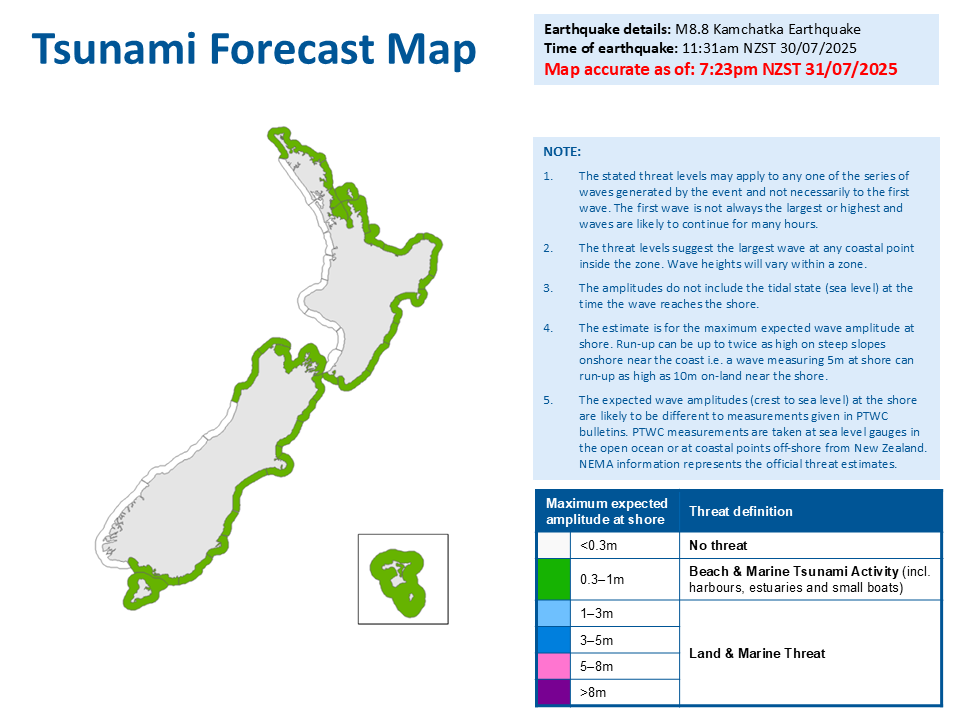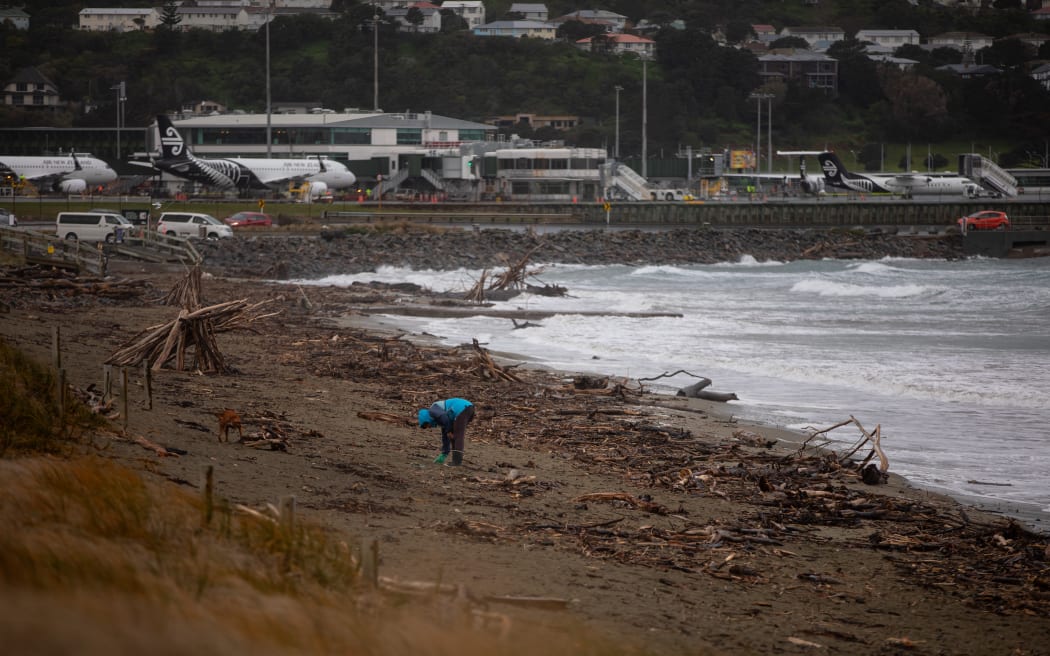Emergency authorities have extended a tsunami activity threat for parts of New Zealand overnight, following a giant earthquake near Russia.
The 8.8 magnitude quake struck off Russia's remote east coast on Wednesday, triggering tsunami waves on multiple countries' shores.
The quake is tied for the sixth-strongest ever recorded, and the strongest since 2011, when a 9.0 magnitude earthquake hit northeast Japan, triggering a devastating tsunami.
Tsunami currents reached parts of New Zealand overnight on Wednesday and the National Emergency Management Agency (NEMA) warned the first surges were unlikely to be the largest.

NEMA said it was likely the advisory would remain overnight on Thursday.
"We expect New Zealand coastal areas to experience strong and unusual currents and unpredictable surges at the shore."
NEMA said the rest of the West Coast of the South Island and Cook Strait that remain under a beach and marine tsunami threat are assessed as only just reaching the threshold for a beach and marine tsunami threat.
Another update would be made about 8am on Friday.
Areas under threat
• The West Coast of the North Island from CAPE REINGA to AHIPARA.
• The East and South Coasts of the North Island from CAPE REINGA to MAKARA including Whangarei, GREAT BARRIER ISLAND, the East Coast of Auckland, Waiheke Island, Waitemata Harbour, Tauranga, Whakatane, Opotiki, Gisborne, Napier, Lake Ferry, the Wellington south coast and Wellington Harbour.
• The West Coast of the South Island from FAREWELL SPIT to PUNAKAIKI including Westport.
• The North and East Coasts of the South Island from FAREWELL SPIT to the CATLINS including Nelson, Picton, the Marlborough Sounds, Kaikoura, Christchurch, Banks Peninsula, Timaru, Oamaru, Dunedin and the Otago Peninsula.
• The South Coast of the South Island from PUYSEGUR POINT to THE CATLINS including Invercargill.
• STEWART ISLAND and the CHATHAM ISLANDS.

'Still a live situation'
NEMA earlier said the threat must be regarded as real until the tsunami alert was cancelled.
Its director Civil Defence Emergency Management, John Price told RNZ's Checkpoint programme on Thursday afternoon that New Zealand was not out of the woods just yet and urged caution.
"We still have a very live situation, we still have tsunami activity and a body of water that is causing concerns."
He says that is predominately on the east coast of the North and South Island.
Price asked people to stay out of the water and away from the shore.
"Absolutely, this is a body of water that creates unseasonal tide activity, current activity, will continue to cause potentially injury or loss of life if people go into the water or near water."
That was the reason for sending texts to Kiwis to remind them to stay away from coastal areas. However, there had been a glitch with the alert system which resulted in some people receiving multiple texts, Price said.
There have been two official alerts and NEMA would be trying to work out why some people had received more than that.
Ninety percent of people entering a tsunami wave died, Price said.
"You will see unusually high tidal surges, you'll see unusually high currents and the water level is unpredictable and it's the unpredictability of this that will potentially cause great danger to people."












